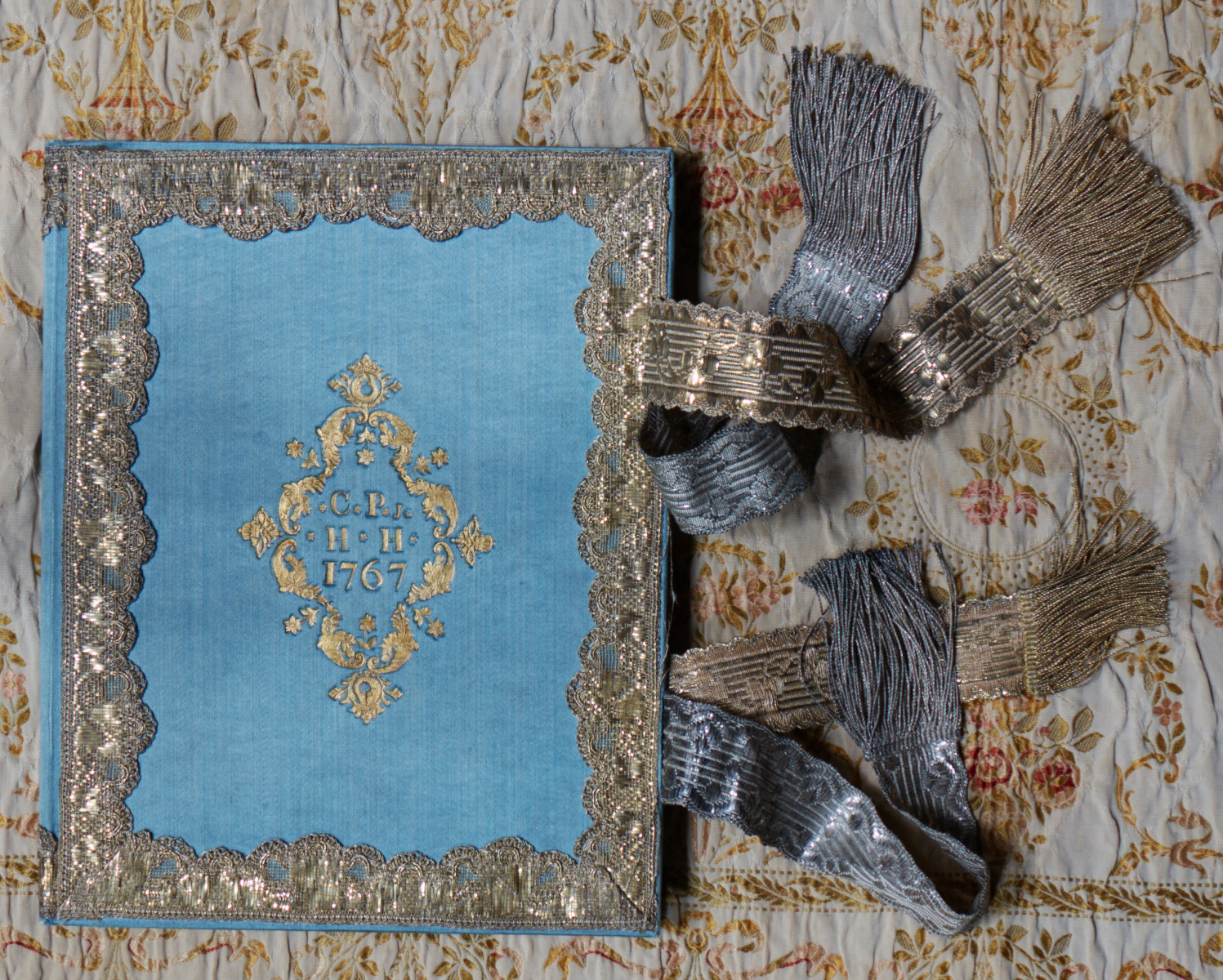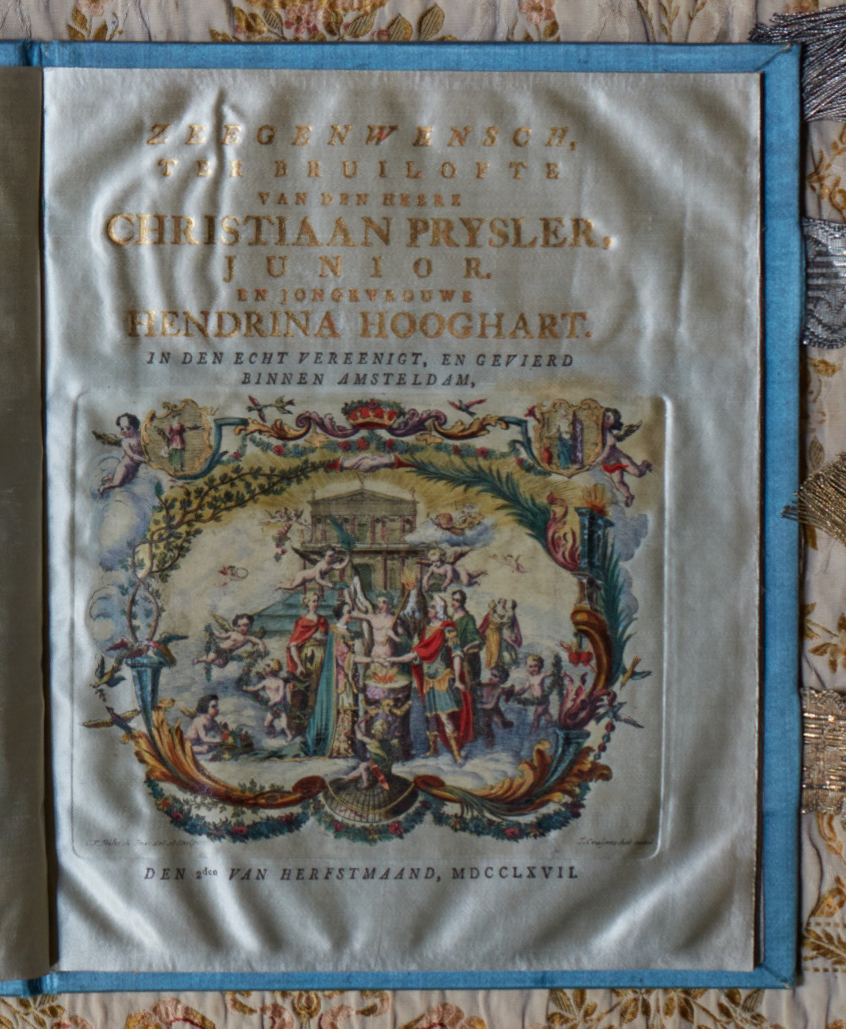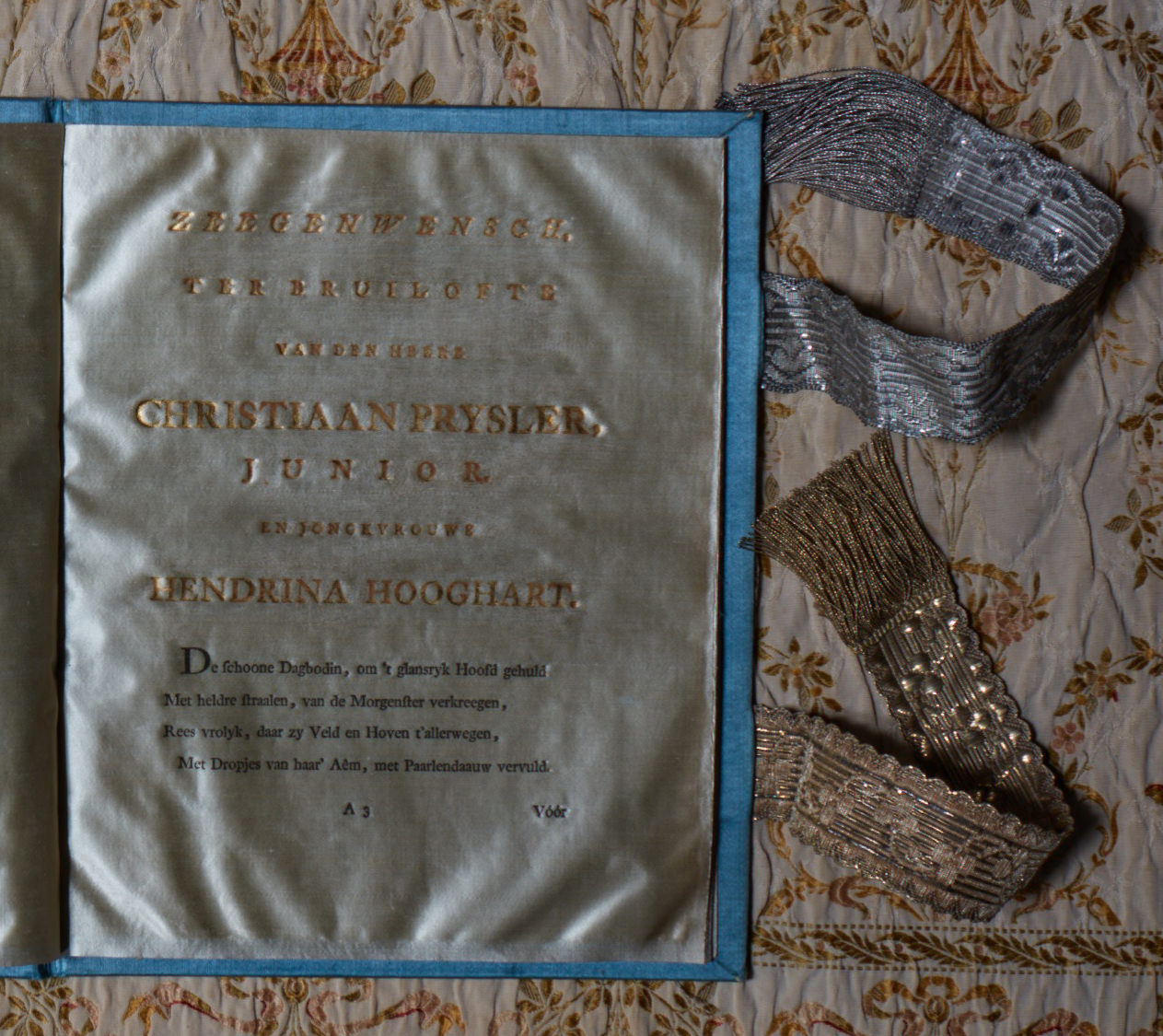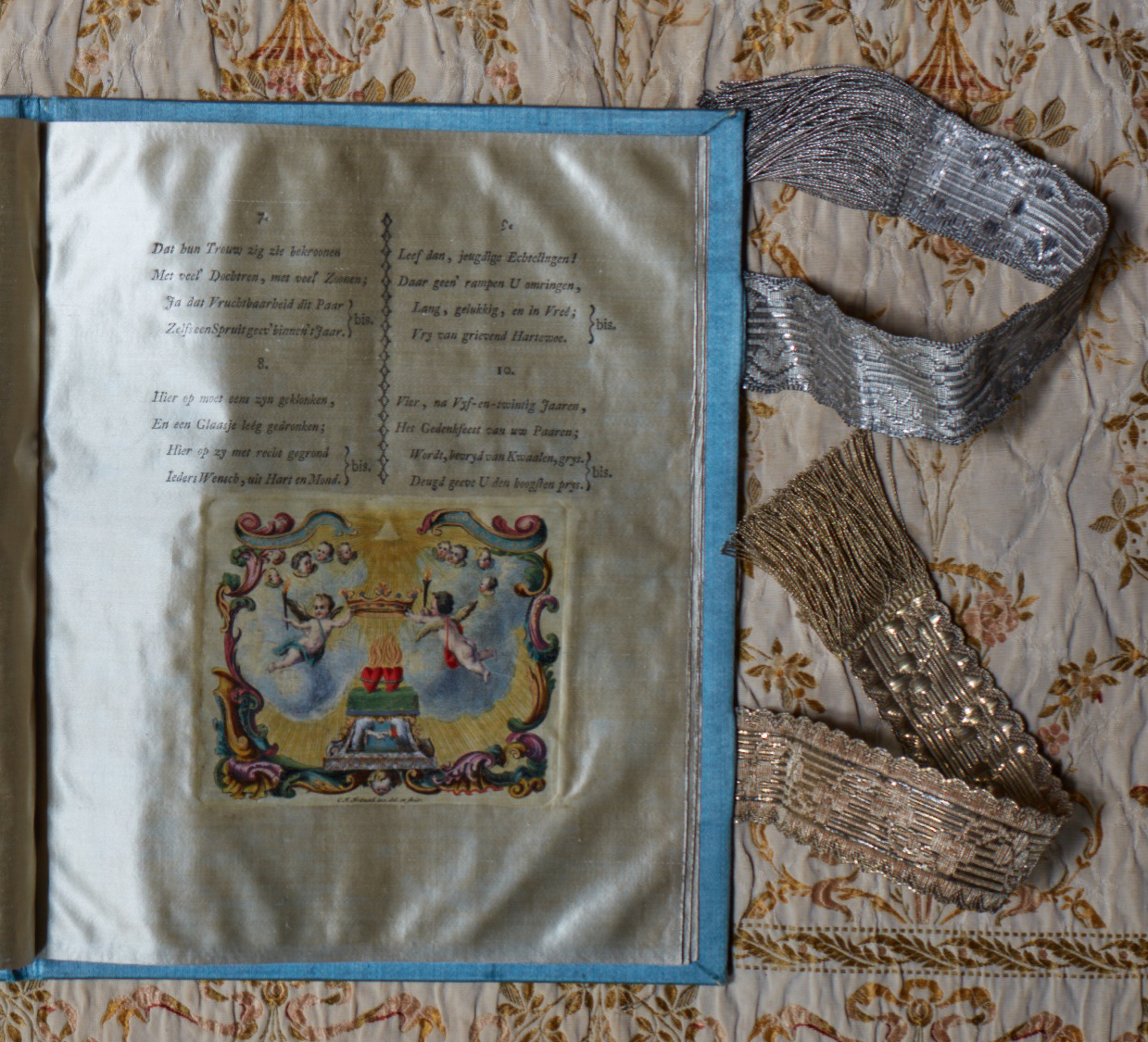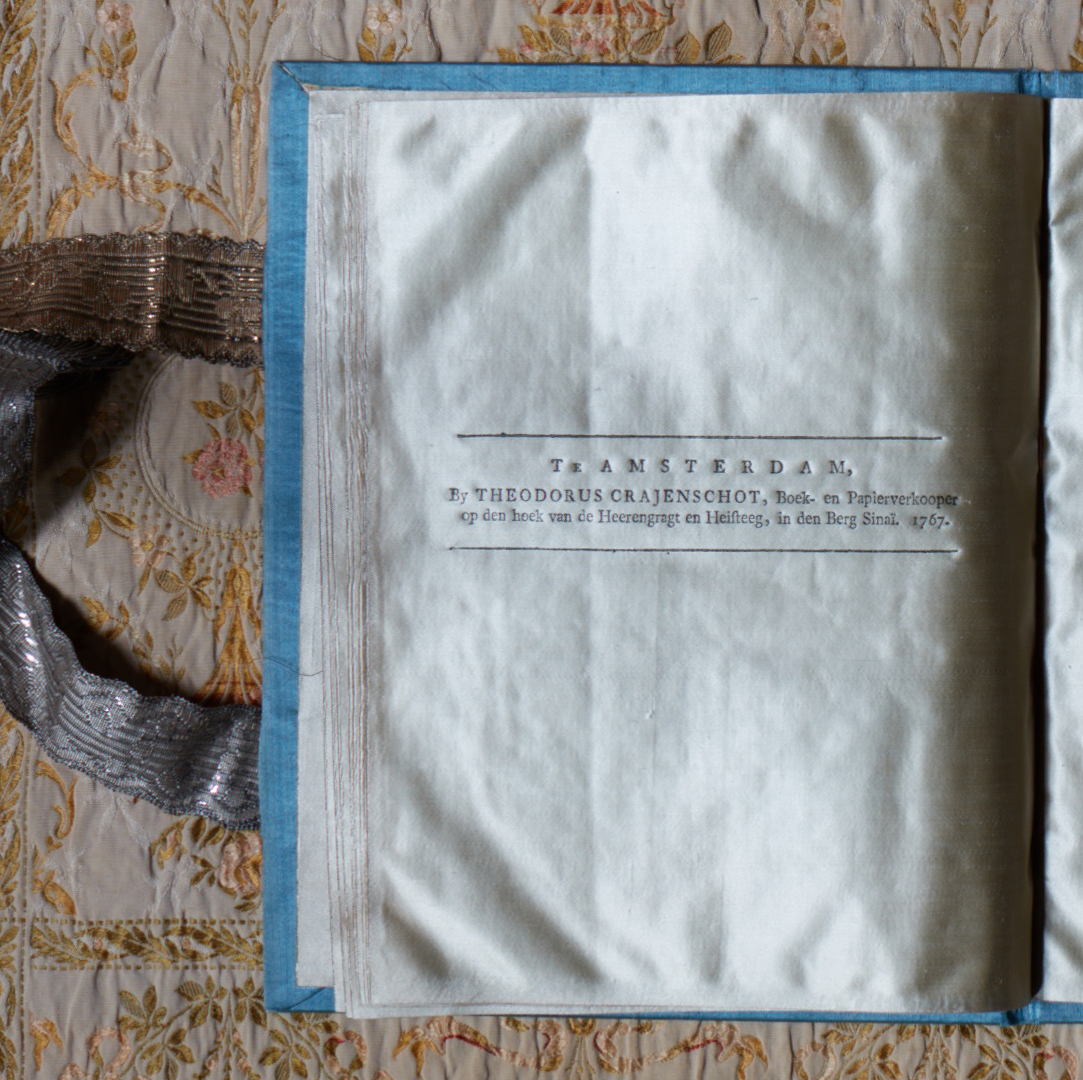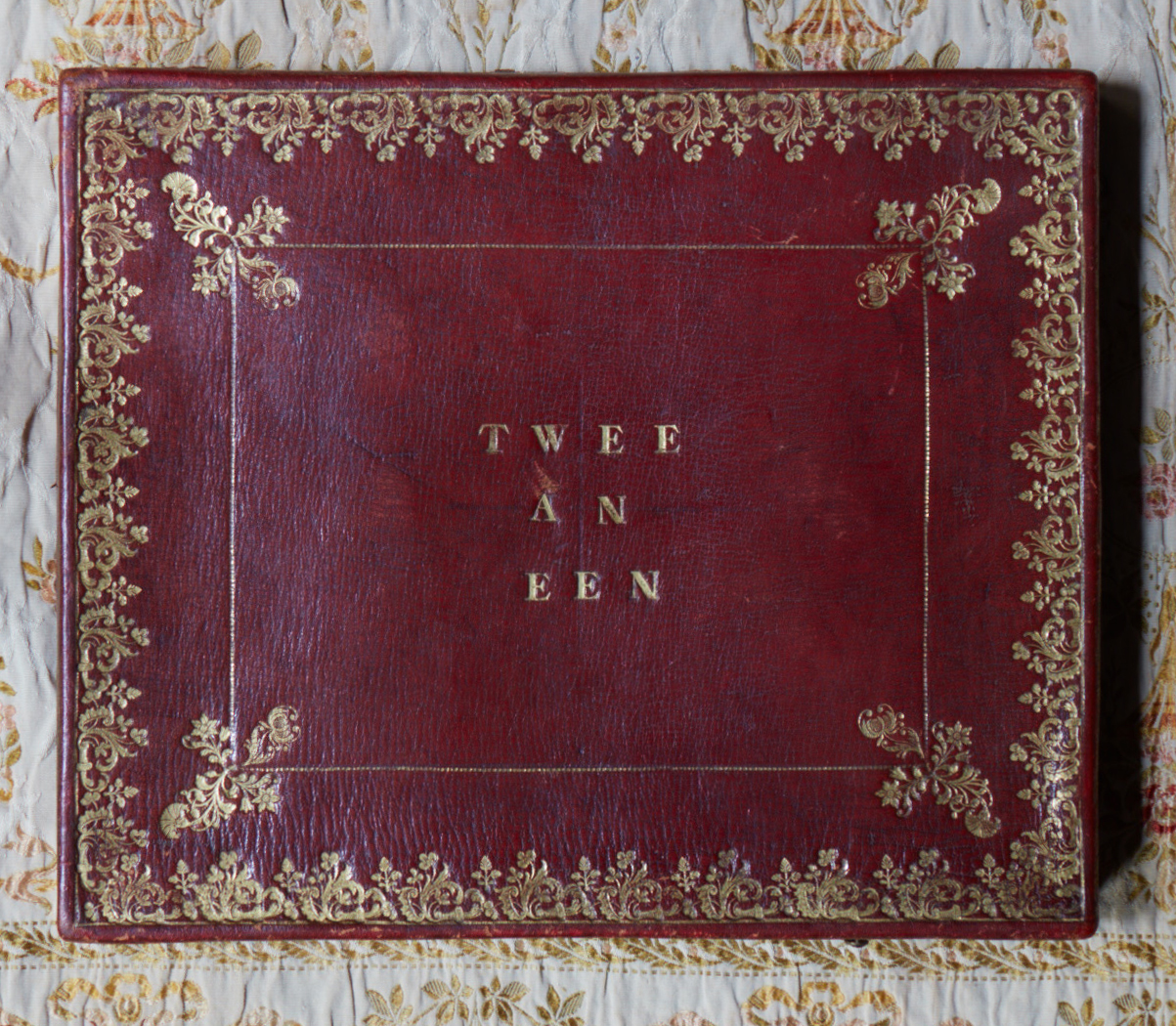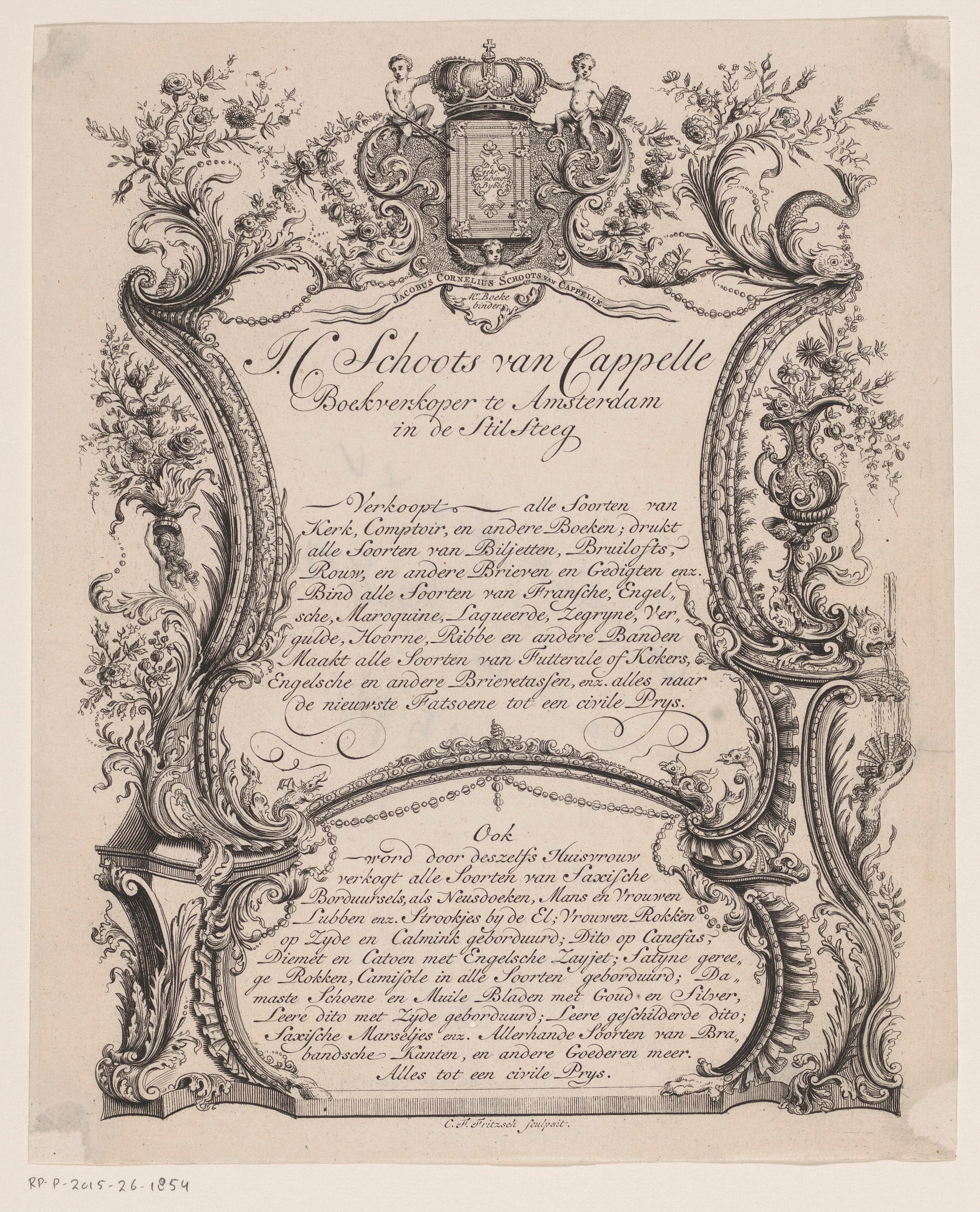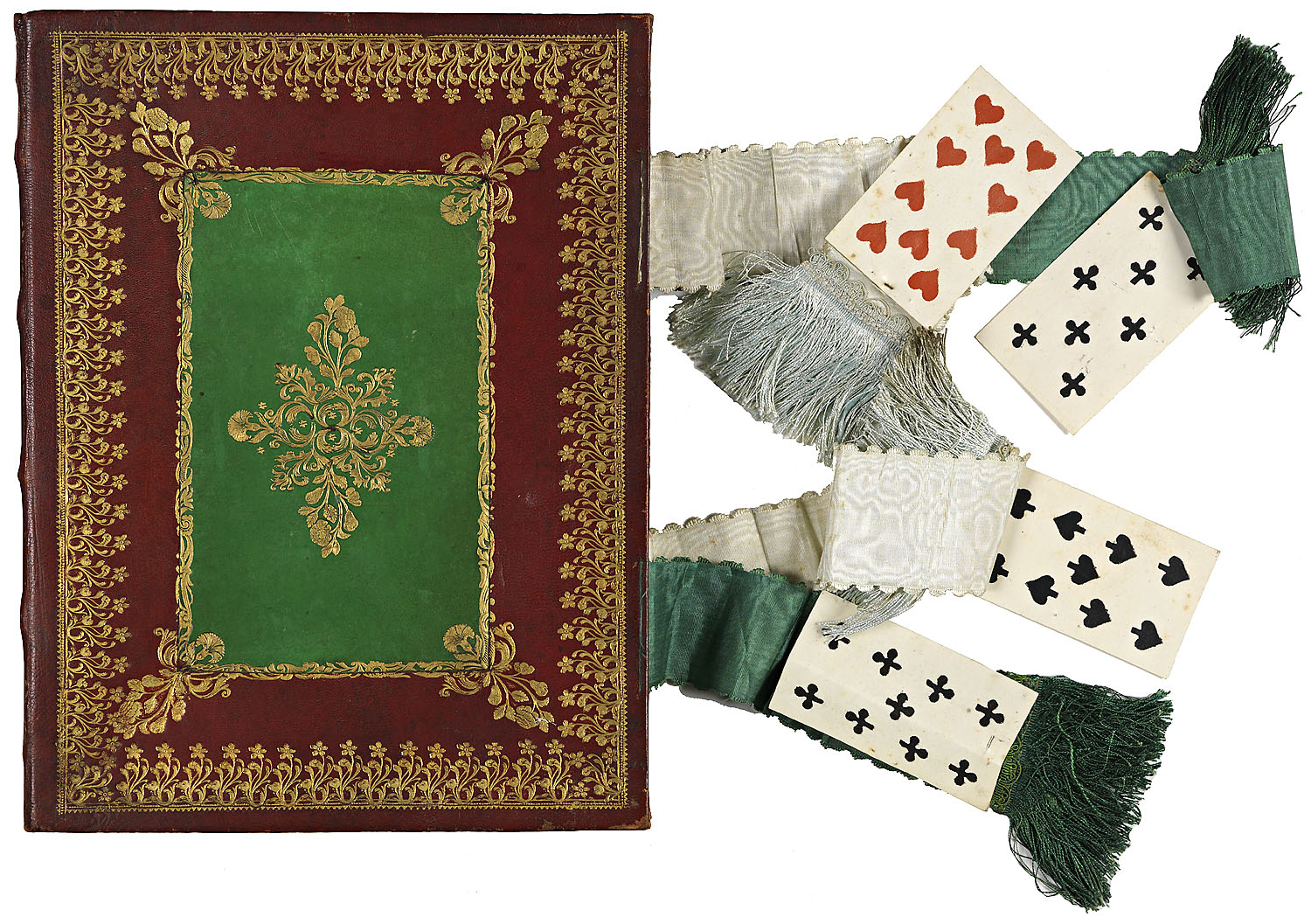Arguably the most luxuriously produced book of the Dutch eighteenth century
Zeegewensch ter bruilofte van den heere Christiaan Prysler Junior en jongkvrouwe Hendrina Hooghart. In den echt vereenigt, en gevierd binnen Amsteldam, den 2den van Herfstmaand, MDCCLXVII, printed and published by Theodorus Crajenschot, Amsterdam, 1767, printed in black ink and gold leaf on silk pages, and heightened in watercolour; in the original blue satin binding by Jacobus Cornelis Schoots van Cappelle, stamped in gold ‘C.P. / H.H. / 1767’ and with silver and gold thread ribbons; contained in the original red morocco case, stamped in gold ‘Twee / An / Een’, en ‘Gebonden / 1767 / den 2. September’.
Book: 272 x 215 x 13 mm; case: 295 x 245 x 40 mm
Provenance
- Produced on the occasion of the marriage of Christiaan Prysler junior and Hendrina Hooghart and presumably by descent until 1900;
- Auction Frederik Muller, Amsterdam, collections H.I.A. Raedt van Oldenbarnevelt, L. Hardenberg, L. Swaab and others, Tableaux anciens, meubles, bronzes, manuscrits, porcelaines, faiences, 3 November 1900;
- with dealer Pearson & Co, London, 1909;
- Dr Daniël François Lunsingh Scheurleer (1855–1927);
- his sale, Van Stockum’s Antiquariaat, The Hague, Bibliothèque de feu M. le Dr D.F. Scheurleer, 12-16 December 1927, lot 1084, p. 111 (sold fl. 230)
- A notable Belgian family;
- With SLAM / Paris Rare Books / Olivier Pingel, shown at NYC Books and Stuttgart Messe
***
This marriage book is arguably the most luxuriously produced book of the Dutch eighteenth century. Printed on silk, partially in gold leaf, and bound by the most important binder of the period, Jacobus Cornelis Schoots van Cappelle, it is also still contained in the original red morocco case, also by Schoots.
There was a vivid tradition in The Netherlands during the seventeenth and eighteenth centuries to produce elaborate wedding poems, extolling the virtues of the groom and bride. These were generally printed on paper and read and distributed to wedding guests. In some rare examples these were also printed on silk, it is thought only for the wedded couple itself. During the seventeenth century, these ‘gelegenheidsgedichten’ were usually only one page long, while they became increasingly more elaborate during the eighteenth century, and sometimes evolved into small booklets. There are 6660 such poems dating before 1800 preserved in the five largest Dutch collections. The overwhelming majority is printed on paper, only seven examples are printed on silk, which illustrates their rarity.1 The earliest known wedding poem on silk, dating to 1674, was sold by ourselves in 2021 to the Koninklijke Bibliotheek in The Hague, and the second-oldest, dating to 1675, was acquired in 2002 by the Rijksmuseum in Amsterdam.2
The printing was done by Theodorus Crajenschot, a leading printer and book seller in Amsterdam around the middle of the eighteenth century. Crajenschot was a Catholic, and imported Catholic literature from the Southern Netherlands. His son, Jacobus Adrianus Crajenschot (1746–1835) followed in his father’s footsteps and became a leading Patriot and one of the instigators of the Batavian Republic.
Jacobus Cornelis Schoots van Cappelle is considered the most important book binder active in eighteenth-century Holland.3 A beautifully produced and fascinating advertising sheet survives in the Rijksprentenkabinet, listing the wares that Schoots could produce.4 The sheet also lists the activities of Schoots’s ‘Huisvrouw’, who dealt in embroidery, silks, satins, ribbons and passementerie. In the year of production, Schoots van Cappelle was listed as a ‘boekverkooper in de Beursstraat, by den Dam’.5
The book celebrates the union of Christaan Prysler junior and Hendrina Hooghart, which took place on 2 September 1767. The collections of the Koninklijke Bibliotheek in The Hague include an unsually lavishly produced wedding poem of 1757, produced on the occasion of the wedding of Jacobus Franciscus Hooft van Huysduynen and Alida Hooghart, who was the sister of the bride of our poem (fig.). This example is bound in red morocco and inset with green-coloured vellum, stamped in gold and decorated with highly unsually ribbons incorporating playing cards. Both sisters were children of the merchant Arnold Hooghart, who was involved in the lucrative whale trade. The groom was a member of a family of glass producers and dealers, who were of Bohemian descent. Like the printer, Crajenschot, both Prysler and Hooghart families were Catholic.
SOLD TO THE KONINKLIJKE BIBLIOTHEEK, THE HAGUE (ROYAL LIBRARY)
1. Gijs van der Ham, ‘Keuze uit de aanwinsten’, Bulletin van het Rijksmuseum, 2005, 53, pp. 76-78.
2. Inv. no. NG-2002-53; Van der Ham, loc. cit., repr.
3. For Schoots, see Jan Storm van Leeuwen, Dutch decorated bookbinding in the eighteenth century, The Hague 2006, vol. I, pp. 521-554.
4. Engraving by Christian Friedrich Fritzsch (1719–1774), 237 x 194 mm; inv. no. RP-P-2015-26-1854.
5. Naamregister van alle voornaamste winkeliers der stad Amstelredam (…), Amsterdam 1767, p. 24.
